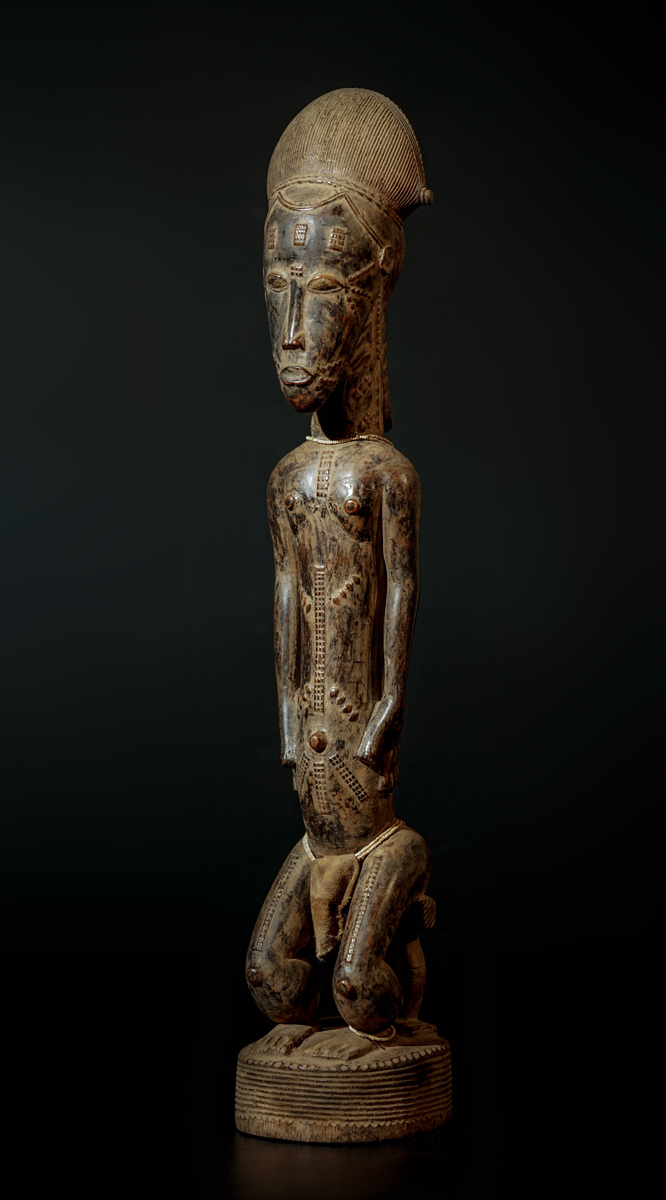|
A male Baule, Blolo Bian sculpture, Ivory Coast, seated on a two-legged stool on a rounded base, wearing a loincloth on the hips on a string of pearls, with a slender torso decorated with fine scars on the front and back and on a stocky neck , hands resting next to the pointed navel, elongated head with finely chiselled hairstyle ending in a plait on the back. The face with a long, flat nose and further decorative scars radiates an inward calm; dark shimmering patina. The Baule believe that, in the otherworld called Blolo, all human beings were married before birth. These spirit spouses called blolo bian, meaning 'spirit husband', and blolo bla, meaning 'spirit wife', follow them into their human lives by way of human-figure sculptures called waka sran, or 'person in wood'. Baule people carve these figures to represent their otherworld spouses and they believe that these spirits have influence over their human lives. "To the Western eye, an essence of Baule style is a balanced asymmetry that enlivens while suggesting stability and calm. [...] To an art historian, the most consistent feature of Baule art, and one expressed across the wide variety of Baule object types, is a kind of peaceful containment. Faces tend to have downcast eyes and figures often hold their arms against the body, so that Westerners might feel that the mood of much classical Baule art is introspective." Susan Vogel Lit.:Baule. African Art, Western Eyes, Susan Vogel (1997: 26 and 28); Pierre Meauzé, L'art nègre: sculpture, Paris 1967, p. 64, no. 1; Margaret Trowell and Hans Nevermann, African and Oceanic Art, New York, 1968, p. 105 John McKesson, "La Collection de Robert Rubin", Arts d'Afrique Noire, no. 71, Autumn 1989, p. 14 Height: 60 cm
|
 photo: wolfgang-jaenicke.com, for more information, please write us an e-mail with the identification number of the photo identification no. FXB03014.jpg |